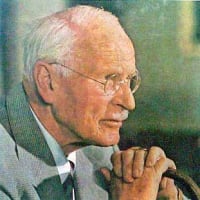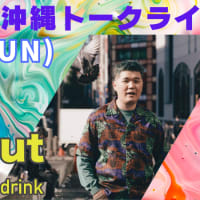
"理性は、理性的な思考と感情の融合から生まれる。二つの機能が引き裂かれると、思考は統合失調症の知的活動に悪化し、感情は神経症的な生命を損なう情熱に悪化する。"
~エリック・フロム『希望の革命』51ページ。
ユングがここで言っていることに注目してください。
思想家が考えていないことは存在しないし、感じていることは感じていないことは存在しない。~カール・ユング『赤い本』248ページ。
しかし、これらの相反するものを統合するとき、私たちは知恵にアクセスすることができます。
"知恵は決して暴力的ではありません:知恵が君臨するところでは、思考と感情の間には何の葛藤もありません。~カール-ユング、CW 14、パラ334
世界の半分は技術者によって、残りの半分は愚かな詩人によって作られたかのようだ。~カール・ユング、ビジョンセミナー、313ページ
思考に行くなら、心を持って行きなさい。もしあなたが愛に行くならば、あなたの頭を持って行きなさい。愛は考えずに空っぽであり、愛のない空洞を考えています。~カール・ユング『赤い本』253ページ。
感覚で考え、感覚で感じ、直感で感じ、などの心理的な機能の融合は、機能の一部とその対応するものとの融合もそうであるように、古風である。~CGユング、 "定義 "CW 6、パラ684。
知的な人にとっては私の本はO.K.なのだが、彼の忌まわしい劣等感のために私はどこにも行けない。~カール・ユング『ユング わが母と私』494ページ
"何てこった、この感覚のタイプは!」と。敏感な人はただの専制的な人で、他の人は彼らに合わせなければなりません。~マリー=ルイーズ・フォン・フランツ(Marie-Louise Von Franz)。
"しかし、知性と感情を一つにまとめることは難しく、定義上、互いに対立します。知的な立場に身を置く者は、時折、感情がアニマという名の敵のように立ちはだかり、逆に知的なアニムスは感情の立場に激しい攻撃を仕掛けてくる。したがって、何かを知的に実現するだけでなく、感覚的な価値に基づいて実現しようとする人は、良くも悪くも、アニマとアニムスの問題に取り組まなければ、より高い結合、つまり対立するものとの結合への道を開くことができません。これは全体性のための不可欠な前提条件である」。~カール・ユング CW9.2 ¶ 58
(私はこの意識を超えた全体性を "自己 "と呼んでいます)。
個性化の過程では、人格における意識と無意識の要素の統合から生まれる姿を先取りしています。
したがって、それは相反するものを統合するシンボルであり、媒介者であり、癒しをもたらす者であり、つまり、全体を作る者である。
このような意味を持つ子供のモチーフは、前述のように様々な変形が可能です。丸み、円や球、あるいは全体性のもう一つの形である四つ子などで表現されます。
私はこの意識を超えた全体性を "自己 "と呼んでいます。
個性化のプロセスの目的は、自己の統合である。~カール・ユング、CW9i、パラ278
深層」には、個人の完全性、全体性、癒しへの鍵があります。
"夢の中の全くの無意識の層である「深層」には、同時に個人の完全性と全体性、つまり癒しの鍵が含まれているのです。全体」や「全体性」の意味は、聖なるものにすることや癒すことです。深いところに降りていくことで、癒しがもたらされます。それは、全存在への道であり、苦悩する人類が永遠に探し求めている、恐ろしい危険に守られた場所に隠された宝への道である。ここは原初的な無意識の場所であると同時に、全体性の宝石を含んでいるため、癒しと救済の場所でもあります。それはカオスのドラゴンが住んでいる洞窟であると同時に、不滅の都市であり、魔方陣(テメノス)であり、分割された人格のすべての部分が統合される聖域である」。~C.G.ユング、タビストック講義、パラグラフ270
“Reason flows from the blending of rational thought and feeling. If the two functions are torn apart, thinking deteriorates into schizoid intellectual activity and feeling deteriorates into neurotic life-damaging passions.”
~Erich Fromm, The Revolution of Hope, Page 51.
Note what Jung says here:
What a thinker does not think he believes does not exist, and what one who feels does not feel he believes does not exist. ~Carl Jung, The Red Book, Page 248.
But when we integrate these opposites we gain access to wisdom:
“Wisdom is never violent: where wisdom reigns there is no conflict between thinking and feeling.” ~Carl Jung, CW 14, Para 334
It seems as if one-half of the world had been made by an engineer and the other half by a foolish poet. ~Carl Jung, Visions Seminar, Page 313
If you go to thinking, take your heart with you. If you go to love, take your head with you. Love is empty without thinking, thinking hollow without love. ~Carl Jung, The Red Book, Page 253.
Fusion of the psychological functions, of thinking with feeling, feeling with sensation, feeling with intuition, and so on, is archaic, as is also the fusion of part of a function with its counterpart. ~CG Jung, “Definitions” CW 6, Para 684.
To an intellectual man my books are O.K., but I get nowhere due to his damned inferior feeling. ~Carl Jung, Jung My Mother and I, Page 494
“My God, These feeling types! […] Sensitive people are just tyrannical people - everybody else has to adapt to them.” ~Marie-Louise Von Franz.
"Intellect and feeling, however, are difficult to put into one harness they conflict with one another by definition. Whoever identifies with an intellectual standpoint will occasionally find his feeling confronting him like an enemy in the guise of the anima; conversely, an intellectual animus will make violent attacks on the feeling standpoint. Therefore, anyone who wants to achieve the difficult feat of realizing something not only intellectually, but also according to its feeling-value, must for better or worse come to grips with the anima / animus problem in order to open the way for a higher union, a coniunctio oppositorum. This is an indispensable prerequisite for wholeness". ~Carl Jung. CW9.2 ¶ 58
[I have called this wholeness that transcends consciousness the “self.”]
In the individuation process, it anticipates the figure that comes from the synthesis of conscious and unconscious elements in the personality.
It is therefore a symbol which unites the opposites; a mediator, bringer of healing, that is, one who makes whole.
Because it has this meaning, the child motif is capable of the numerous transformations mentioned above: it can be expressed by roundness, the circle or sphere, or else by the quaternity as another form of wholeness.
I have called this wholeness that transcends consciousness the “self.”
The goal of the individuation process is the synthesis of the self. ~Carl Jung, CW 9i, Para 278
The Depths contain the key to individual completeness, wholeness and healing :
"So these depths, that layer of utter unconsciousness in our dream, contain at the same time the key to individual completeness and wholeness, in other words to healing. The meaning of “whole” or “wholeness” is to make holy or to heal. The descent into the depths will bring healing. It is the way to the total being, to the treasure which suffering mankind is forever seeking, which is hidden in the place guarded by terrible danger. This is the place of primordial unconsciousness and at the same time the place of healing and redemption, because it contains the jewel of wholeness. It is the cave where the dragon of chaos lives and it is also the indestructible city, the magic circle or temenos , the sacred precinct where all the split-off parts of the personality are united." ~C.G. Jung, Tavistock Lectures, para. 270



















